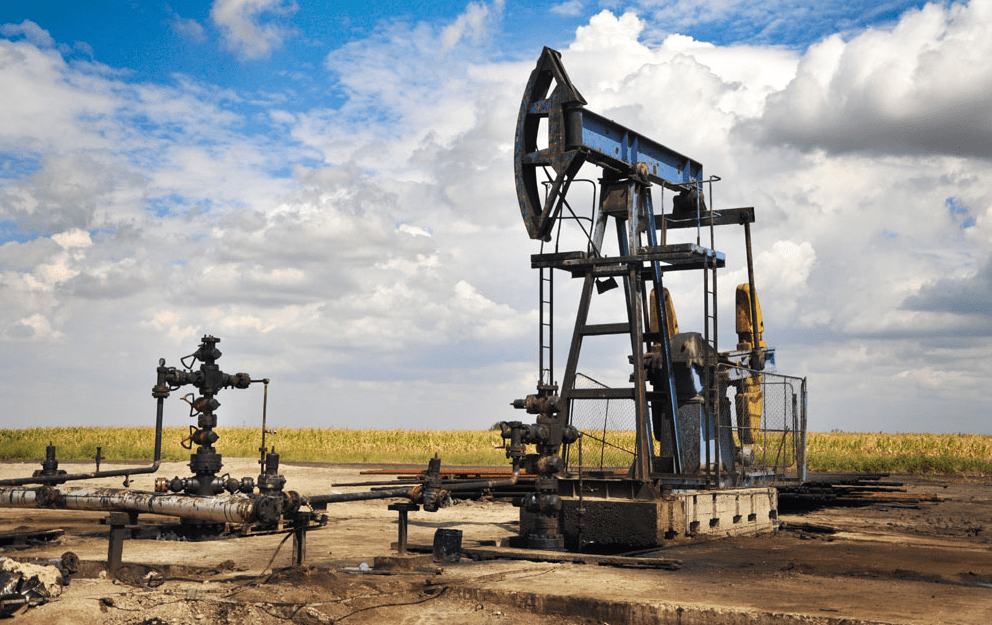Due to the poor performance of drilling fluid, too much filtration will soak the formation and become loose. Or the shale soaked in the well section with too large dip Angle expands, spalling into the well and causing stuck drilling.
Signs of a collapsing well wall:
1.It collapsed during drilling
2.The well collapsed during drilling
3.The well collapsed while drilling
4.Reaming is different
Wall collapse prevention:
1. Use anti-collapsing drilling fluid or drilling system that matches the formation, appropriately improve the density and viscosity of drilling fluid, strictly control water loss, and improve rock carrying capacity.
2. Drilling in collapsible areas, before entering the Shahejie formation, the drilling fluid should be supplemented with sufficient anti-collapse materials according to the design requirements, and the content should reach about 3%.
3. The performance of drilling fluid should be stable and cannot be substantially treated.
4. During drilling, the pumping pressure increases, the suspended weight decreases, the drilling tool is stuck, and the wellhead return is reduced or the single rotary table is unloaded. When the drill pipe is reversed seriously, the drilling pipe should be stopped or connected, the drilling tool should be lifted to the normal well section, and the method of flushing through is adopted.
5. Drilling in the leakage layer, more drilling fluid in less out, stop drilling cycle observation, leakage more than 5 m³/h, or only in and out, must be immediately organized drilling, annular continuous injection of drilling fluid, must not open the pump in the middle. When the drilling fluid is insufficient, it can be filled with water to try to pull out the drilling tool.
6. Avoid fixed-point circulation, often change the bit position, and try to avoid the well section that is easy to leak and collapse.
7. Drilling must be continuously filled with drilling fluid to maintain the pressure of liquid column. When the drilling is stuck, it is not hard to pull out. After the drilling tool is lowered to the smooth well section and the pump is opened normally with small displacement, the circulation is gradually increased.
8. Start drilling at low speed without pulling out the piston.
9. Control the drilling speed, no hard pressure in case of resistance, lift the drilling tool to the smooth well section, and use one punch. Two through three row method.
Treatment of shaft wall collapse:
After the collapse of the drill, there may be two situations, one is that the circulation can be small, and the other is that the circulation cannot be established at all.
1. If you can cycle with small displacement, you must not lose this hope, but you must control the basic balance of import flow and export flow. After the circulation is stabilized, gradually increase the viscosity and shear of the drilling fluid to increase its sand carrying capacity, and then gradually increase the flow rate to try to bring the collapsed rock to the surface. After this step is done, even if the sticky suction stuck drill occurs, it is also dealt with.
2. If the stuck hole is formed by the collapse of limestone and dolomite, and the collapsed well section is not too long, you can consider pumping inhibitory hydrochloric acid to release the stuck.
3. The next step is milling reverse. In soft formation, it is advisable to use a long barrel sleeve milling, or use a long barrel sleeve milling with a male cone or fishing spear, so that the milling and reversing can be completed at one time to speed up the progress. In hard formation, it is advisable to reduce the length of casing tube and minimize the errors in the milling process. When milling to the centralizer, it is advisable to jar the jar to release the stuck, because a lot of facts have proved that there is little sand accumulation below the centralizer, and it is not necessary to mill the stabilizer.
Post time: Dec-01-2023









 Room 703 Building B, Greenland center, Hi-tech development zone Xi’an, China
Room 703 Building B, Greenland center, Hi-tech development zone Xi’an, China
 86-13609153141
86-13609153141


